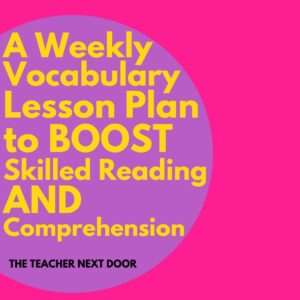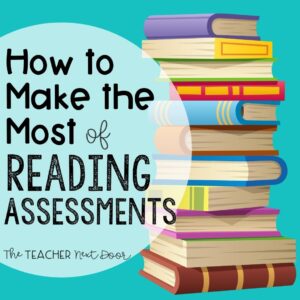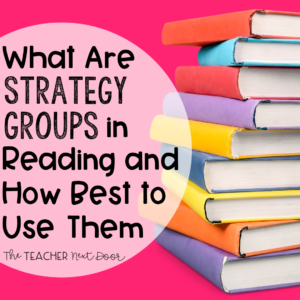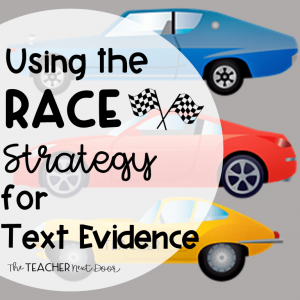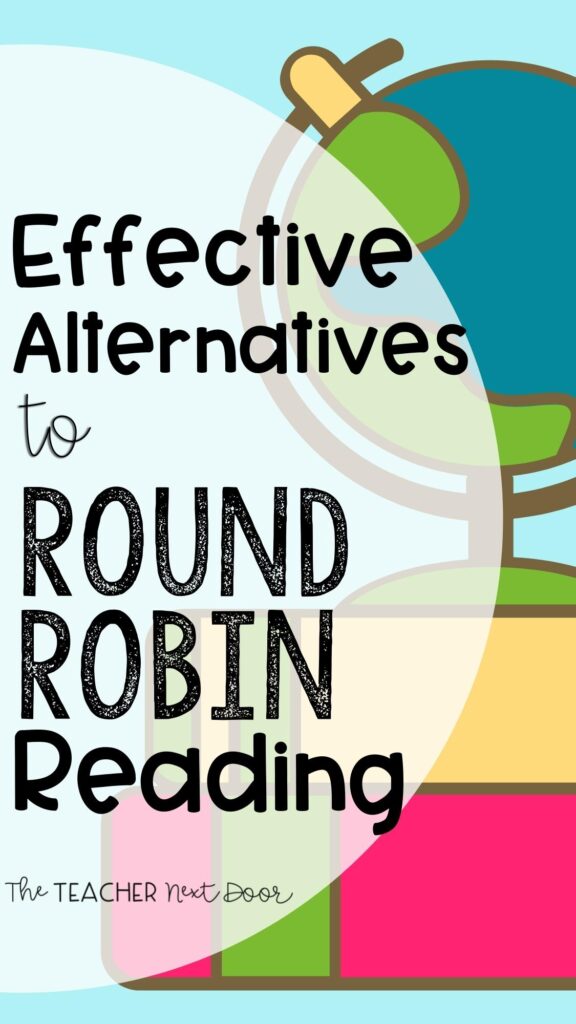
For better or worse, there are certain things in the world of education that seem to stick around no matter what. An apple for the teacher, silent ball, and round-robin reading are a few things that come to mind.
I love a big crisp apple, and silent ball is absolutely one of the best games ever invented. Round robing reading, on the other hand… I think it’s time to let that one go.
What is Round Robin Reading?
You probably know this, but just in case, round-robin reading is when each student has his or her own copy of the text. Everyone is following along, as individual students take turns reading small sections aloud.
Why Round Robin Should Be a Thing of the Past
While the original purpose of Round Robin reading was to engage students and to allow teachers to hear students read on a consistent basis, there’s a ton of research showing that this type of reading is not effective. It doesn’t help students with oral reading fluency, decoding, comprehension, or engagement. In fact, it often has the opposite effect. It may mean that many kids aren’t paying attention to the text at all when others are reading!
Aside from all of that, it’s stressful for a lot of kids. When I was in school, I hated round-robin reading! I would get so nervous, I always tried to figure out which would be “my” section and practice it. I’d look for any words that might trip me up or be hard to pronounce, barely paying attention to the rest of the text. And I was an excellent reader- I can’t imagine what this was like for kids who struggled.
I am not trying to shame you for using round robing reading, tons of teachers do it (I used to do it myself)! I do, however, think it’s time to take a look at WHY this practice persists, and prepare ourselves with some alternatives.
So, WHY Do We Continue to Use Round-Robin Reading?
There are lots of reasons! It’s familiar, it’s calm and orderly, it allows teachers to feel like everyone is paying attention and everyone has been exposed to the text. It’s a familiar, comfortable method, and it takes very little prep time.
All of this is true, but I think there is another reason that is even more prevalent. Sometimes teachers just don’t know what else to do!
If this is the case for you, you’re in luck! I’ve put together a list of my all-time favorite alternatives to round-robin reading! Each one is more engaging, less stressful, and more fun for students. Best of all, none of these puts kids in the uncomfortable “hot seat” where they have to read aloud to the whole class.
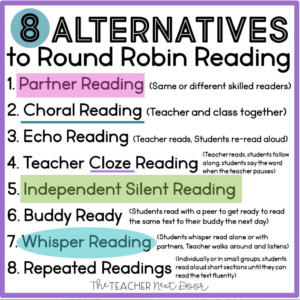
Alternatives Ways to Promote Oral Reading Fluency Practice
Partner Reading
Partner reading is super flexible! You can partner kids up on the fly if needed, or you can preplan the groups, pairing up kids up based on skill or personality. This is an awesome way to target reading skills that specific kiddos need to work on.
Choral Reading
Choral reading is when the teacher and the whole class are reading the text aloud together. It’s perfect because no one is put on the spot, and everyone is reading (or at least hearing) the text! This can be done without much prep beforehand, so it’s a good one to use when you find yourself having to come up with something quickly.
Echo Reading
In echo reading, the teacher reads a short section aloud, and then all students re-read it aloud. This is a very good choice when reading text that has a lot of unfamiliar words (for example- when introducing a new science concept). It allows students to hear words read correctly and requires them to repeat the new words correctly.
Teacher Cloze Reading
This is when the teacher reads the text aloud, and the students follow along. When the teacher pauses, all students read the next word out loud. This is one of my favorites! Students get to hear fluent reading modeled for them and are usually super engaged because they want to say the right word at the right time.
Independent Silent Reading
Most of the reading that we do in life is independent silent reading, so why not have students practice this skill at school? Students can read during independent reading time for Reading Workshop or as part of Guided Reading groups. This allows students to concentrate on the content, rather than pronunciation. You will want to do some high-quality comprehension work as a group after reading, to help ensure understanding and correct any misconceptions.
Buddy Reading
Having an older or younger buddy to read with is very motivating for students! It also provides an authentic purpose for students to practice reading the same text multiple times- practice, practice so you’ll be ready to read this to your buddy!
Whisper Reading
Kids can whisper read alone or with partners. The benefit to this option is that as the teacher circulates around the room, it’s obvious whether students are attending to the text or not. This also gives students an opportunity to ask for help with tricky words in a no-pressure way.
Repeated Readings
For repeated readings, students work individually or in small groups, reading the same short section of a text several times until they can read it fluently. This is a great option to use during a lesson that is focused on improving reading. Students can put into practice all the different strategies they are learning to conquer a tough text!
Just (Don’t) Do It
The best way to avoid falling back into the same old comfortable routines, even when we know they aren’t best for kids, is to commit to not doing it. Having some ideas already lined up will help.
Take this list of ideas and save it somewhere, so that the next time you’re tempted to use round-robin reading (or its cousin, popcorn reading), you can quickly choose a different idea.
Your students will thank you!

You may also be interested in:

